Rank Species | ||
 | ||
Similar Helianthus microcephalus, Helianthus salicifolius, Helianthus × laetiflorus, Helianthus divaricatus, Helianthus giganteus | ||
Helianthus decapetalus
Helianthus decapetalus, known by the common names thinleaf sunflower and thin-leaved sunflower, is a perennial forb in the sunflower family. It is native to the eastern and central United States and Canada, from New Brunswick west to Iowa, Wisconsin, and Ontario, south as far as Georgia and Louisiana. It produces yellow composite flowers in late summer or early fall.
Contents
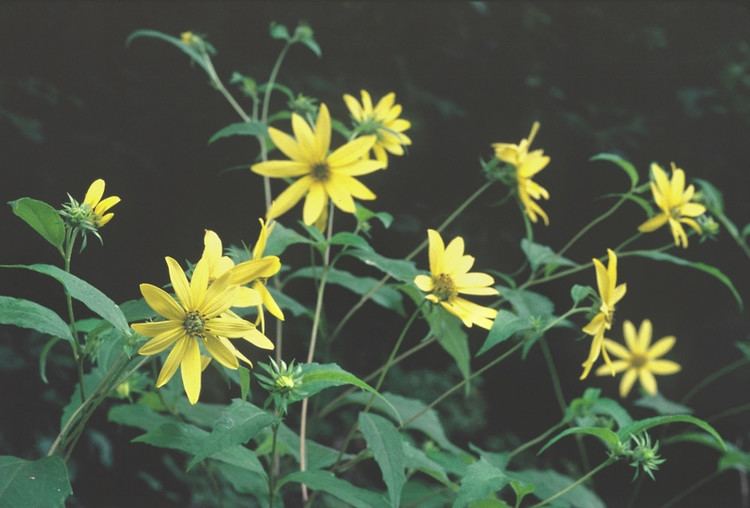
The name decapetalus means "with ten petals," referring to the 8-12 ray florets on the flower heads, resembling petals.
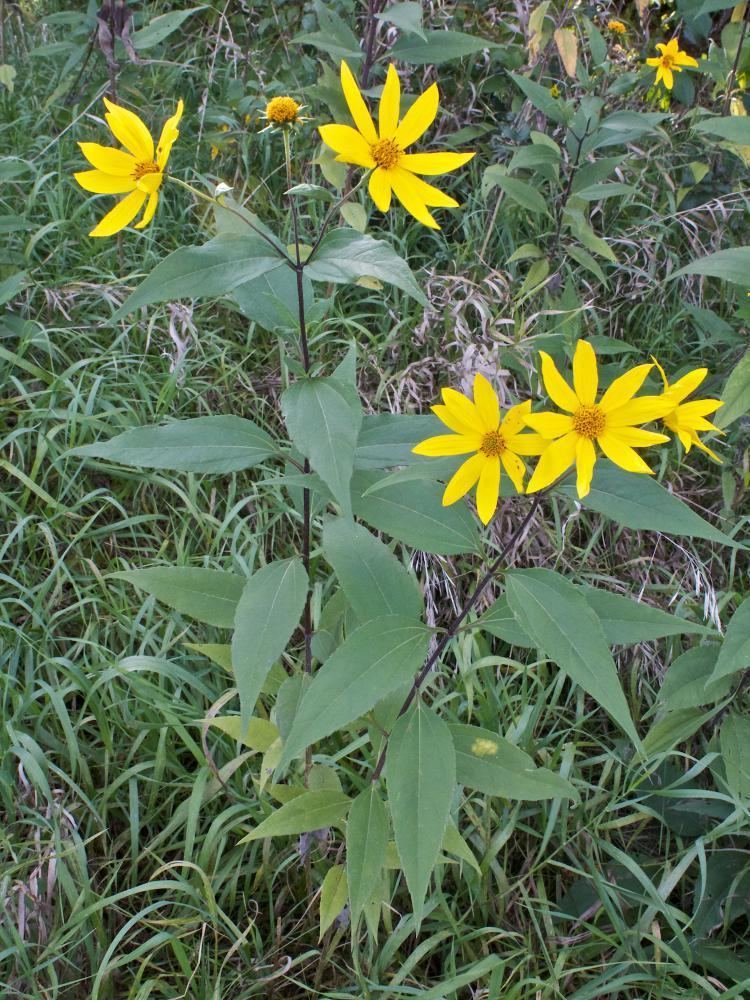
Description
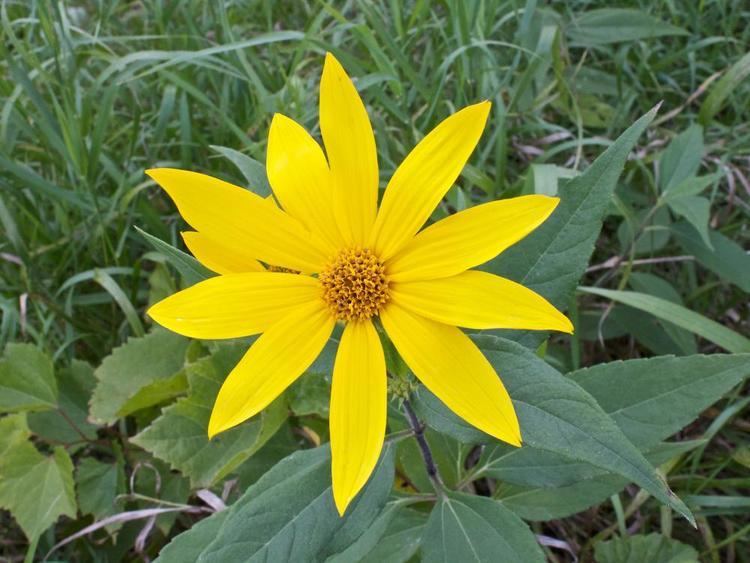
The smooth slender stem of Helianthus decapetalus is 60 to 200 centimeters (2 to almost 7 feet) tall and branched near the top. The ovate or lanceolate leaves are borne on 2 to 5 centimeter long petioles and have serrated edges. They are 7 to 21 centimeters long and 4 to 10 centimeters wide. Helianthus decapetalus has 3 to 10 flowerheads. Each flowerhead is composed of 21 to 50 disk florets, and 8 to 12 ray florets, which are 2 to 2.5 centimeters long. The bracts are typically 11 to 16 millimeters long, surpassing the flower disk by at least half their length. The fruit are 3.5 to 5 millimeter long cypselae with a pappus of two scales.
Distribution and habitat
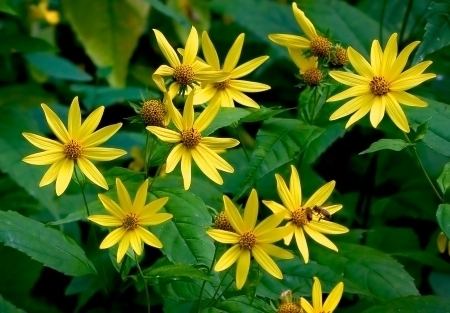
In Virginia it grows in habitats such as floodplain forests and riverbanks. The presence of this species is dependent on appropriate habitat, and it may be eliminated from an area by development, changes in land use, or competition with invasive species.
Ecology
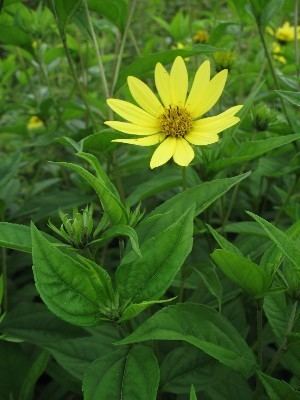
The flowers attract many kinds of insects, including bees and butterflies, some of which, such as the painted lady and the silvery checkerspot, use the plant as a larval host. The seeds provide a source of food for birds. Muskrats eat the leaves and stems and use the stems in the construction of their lodges.
